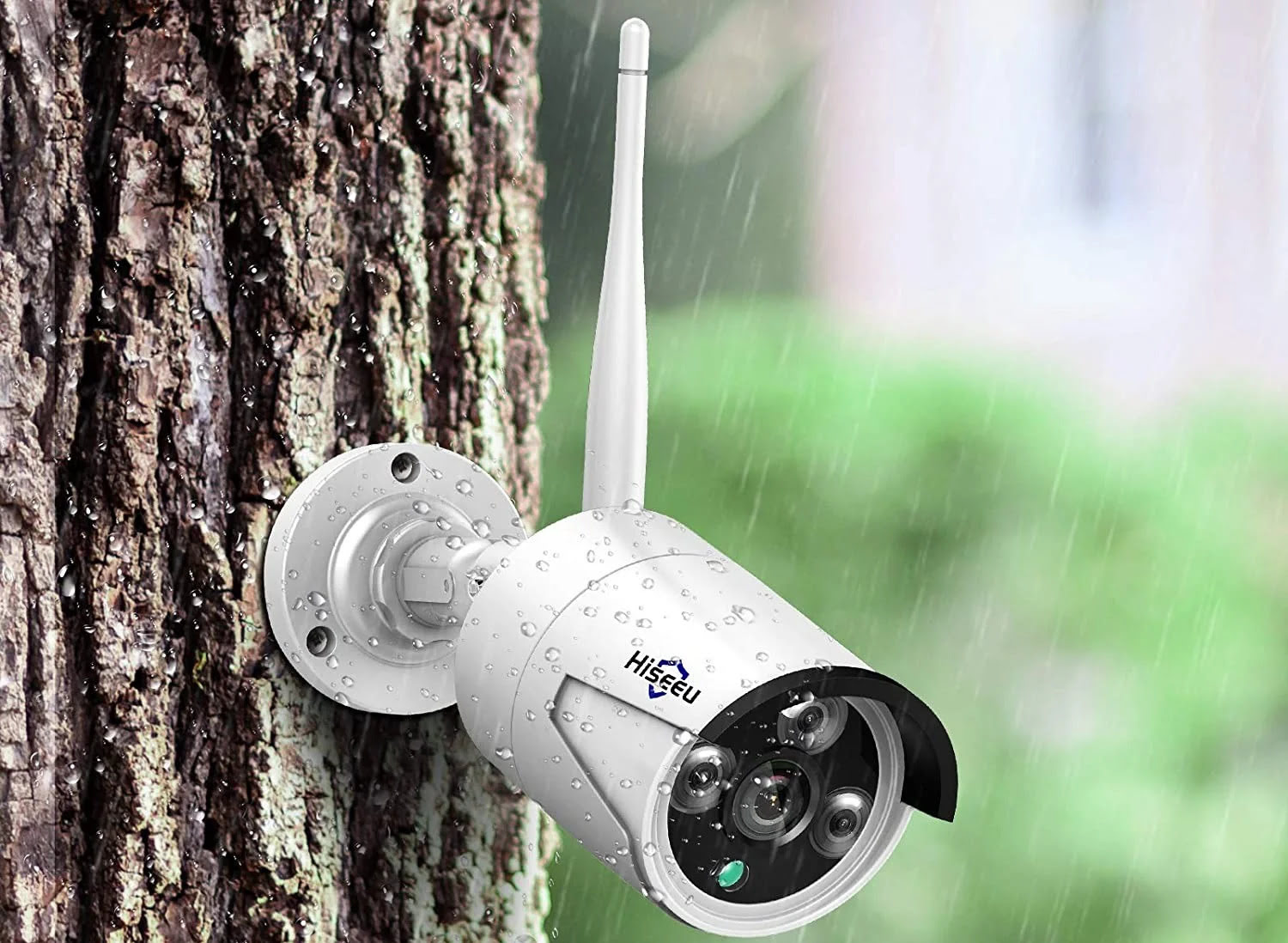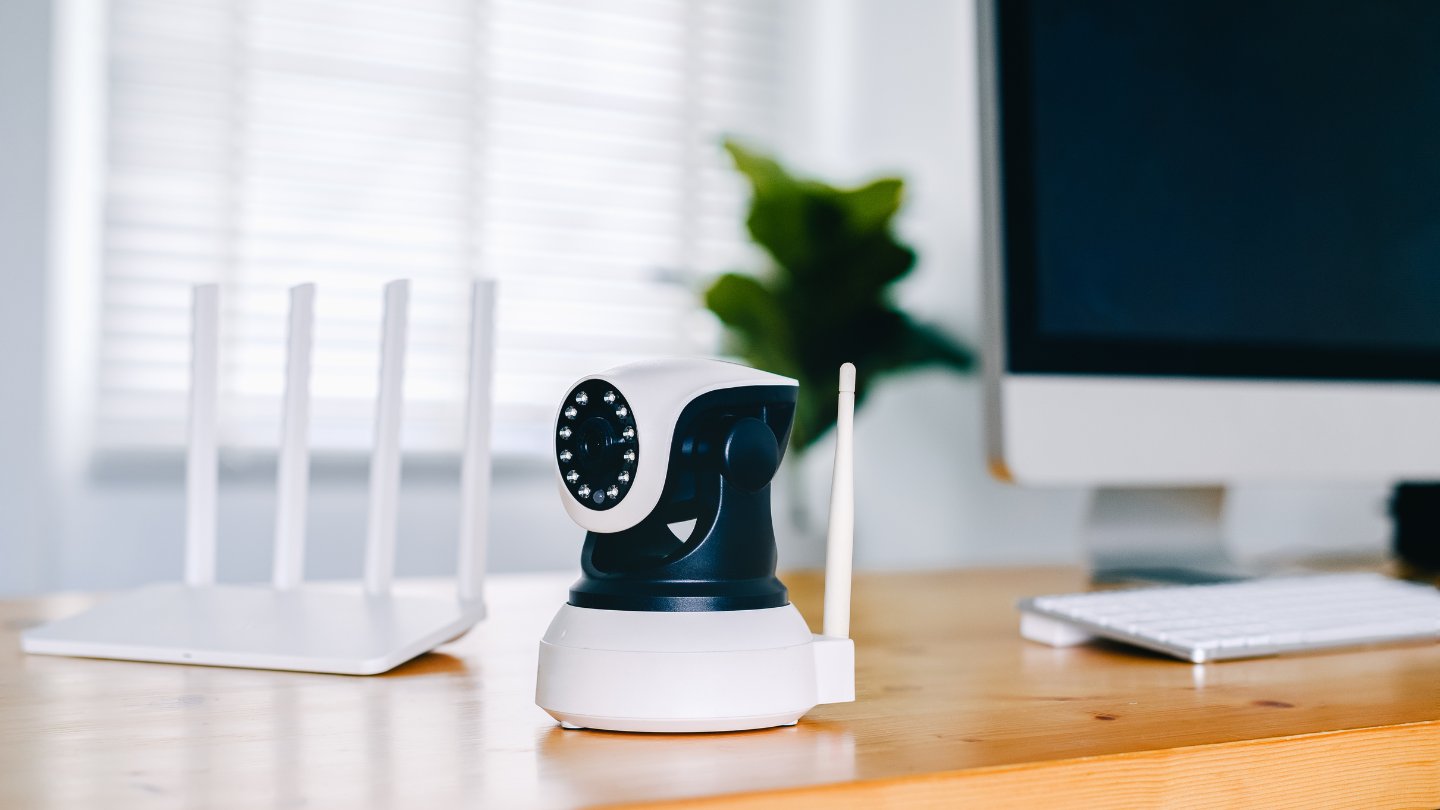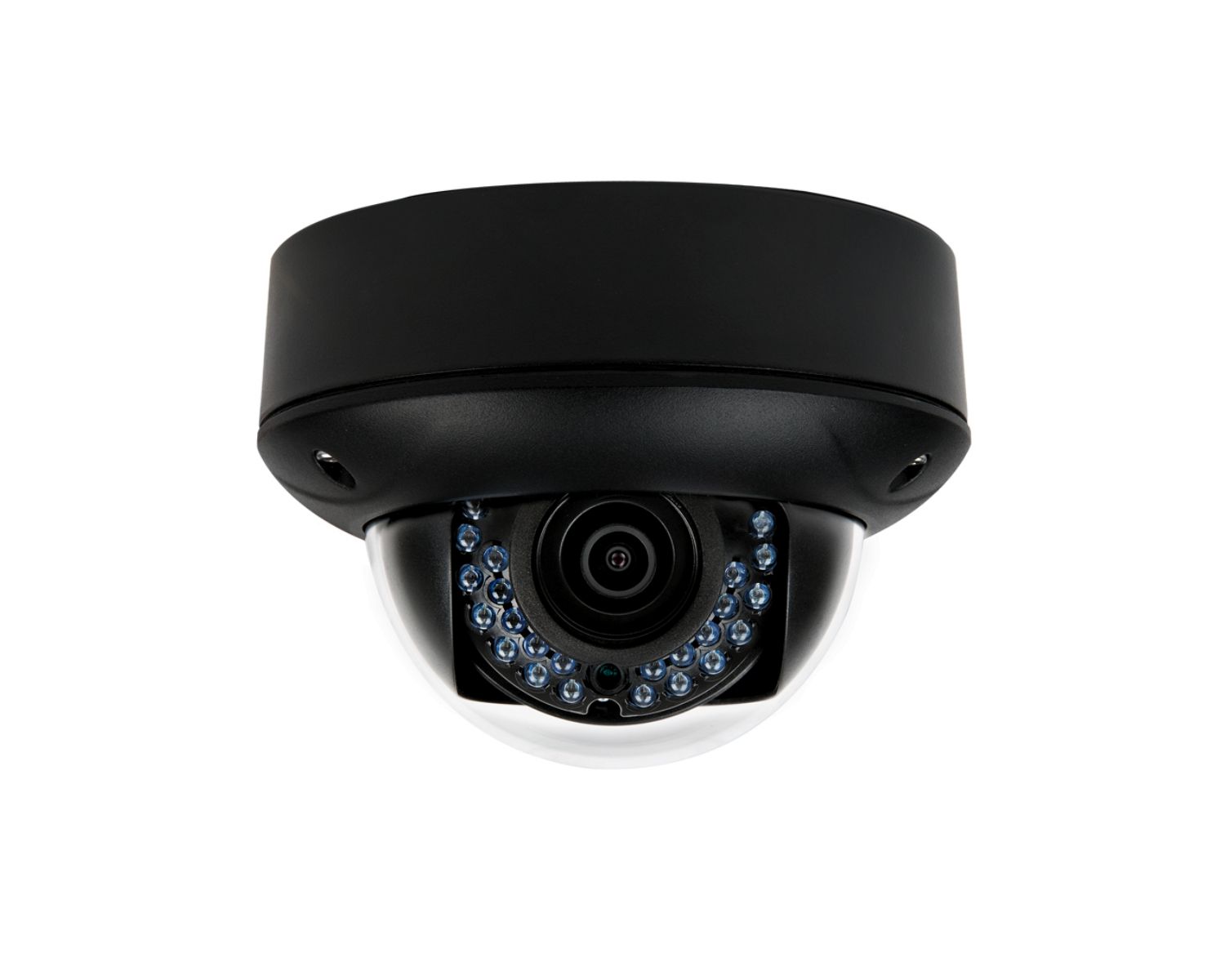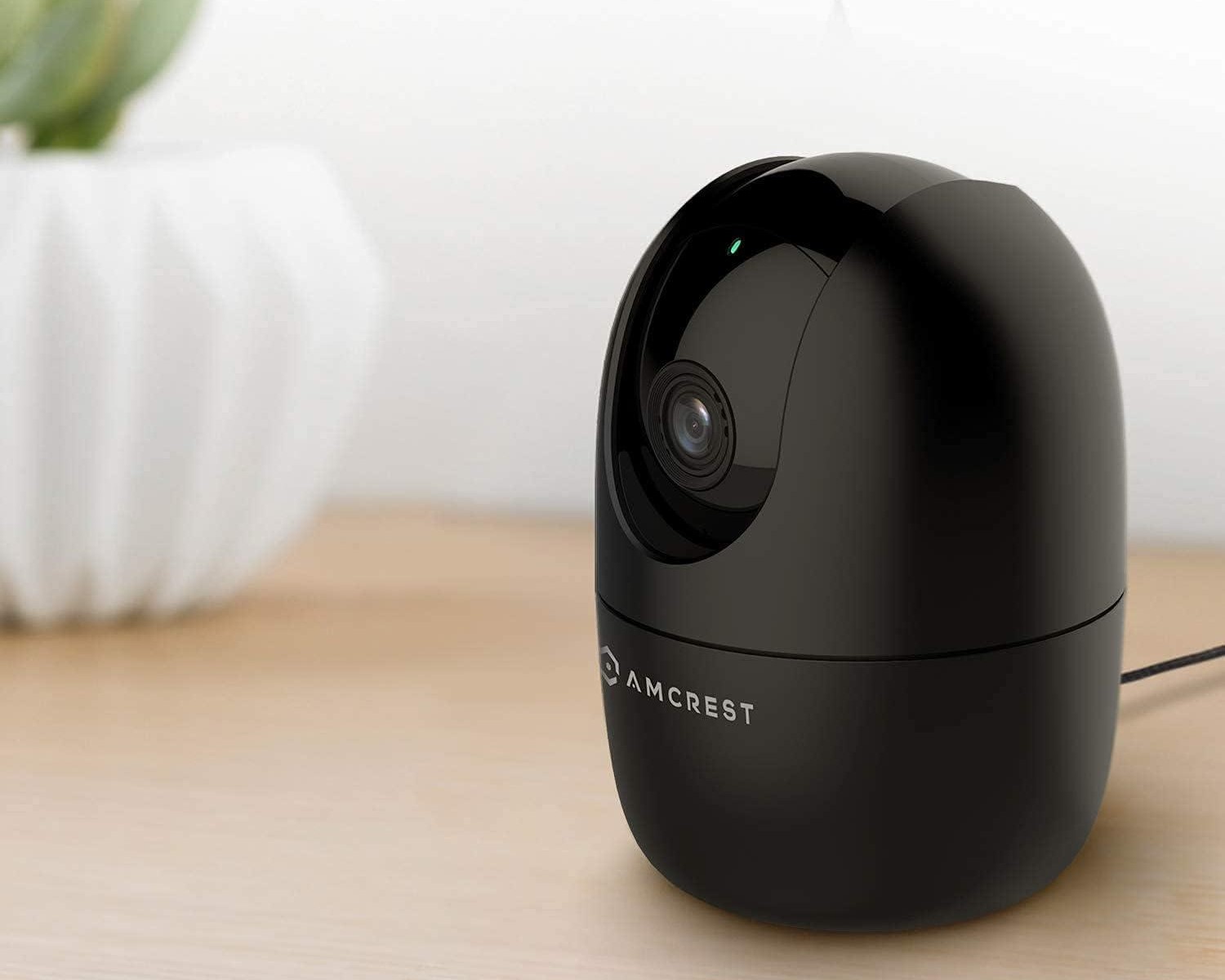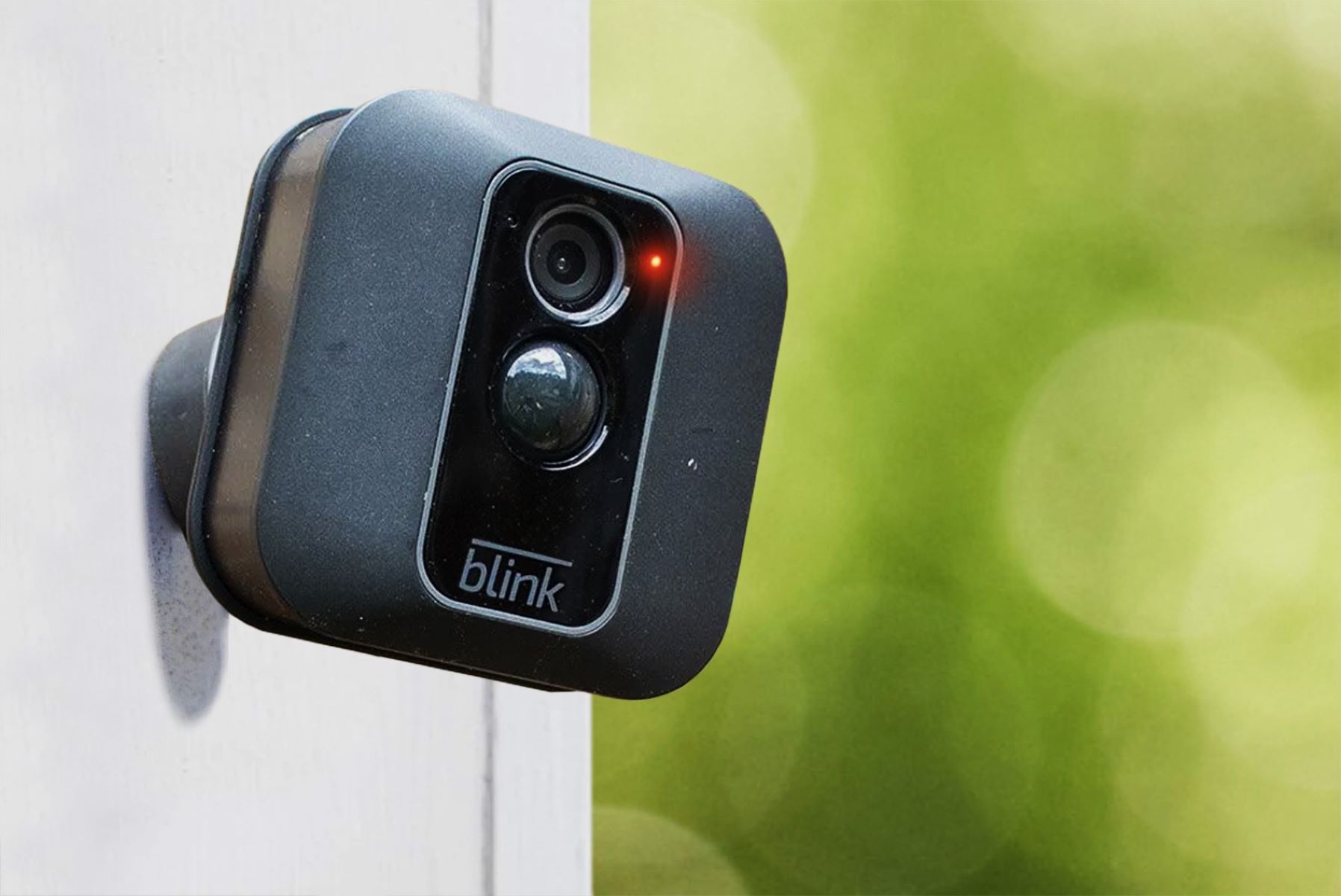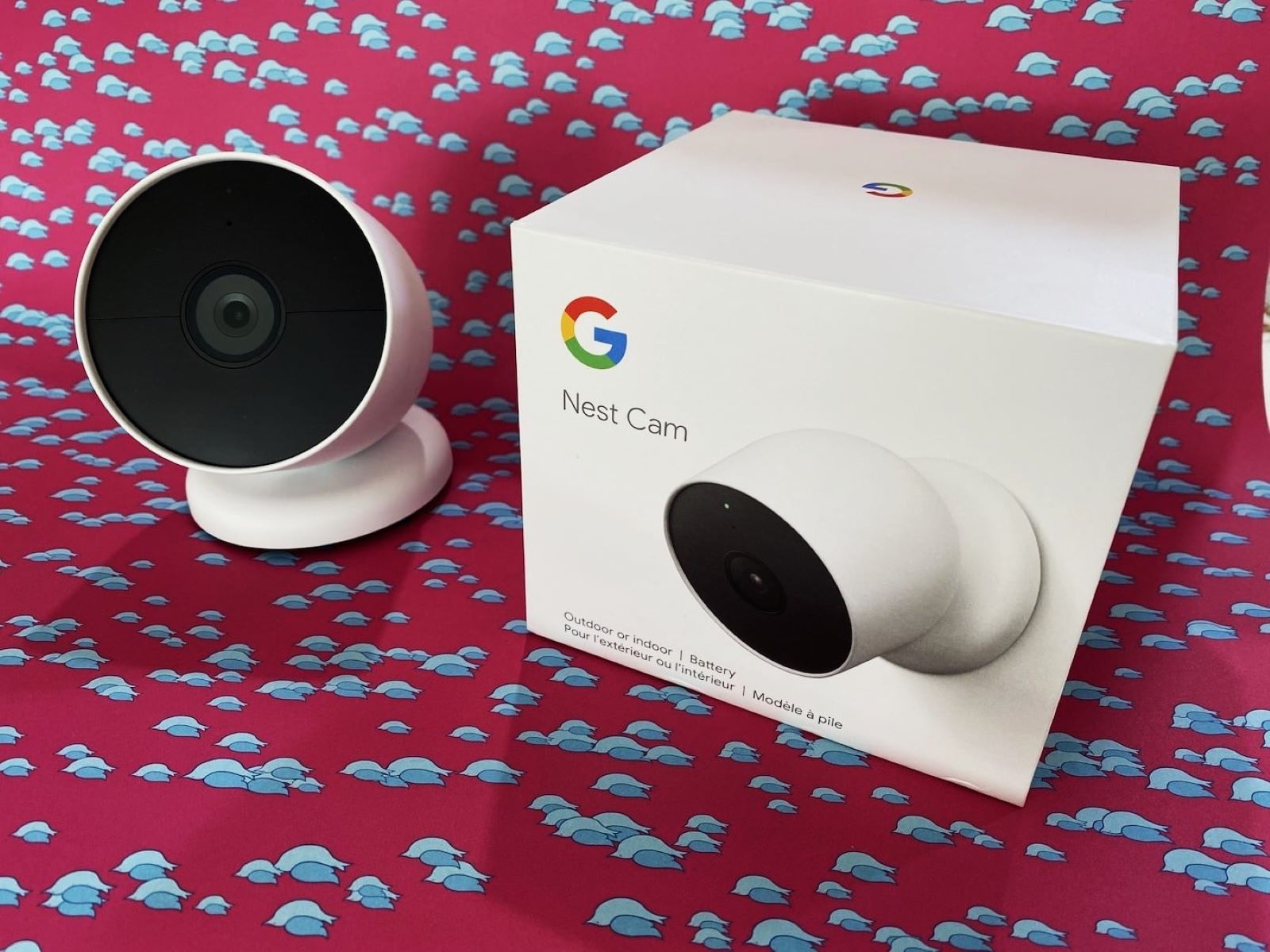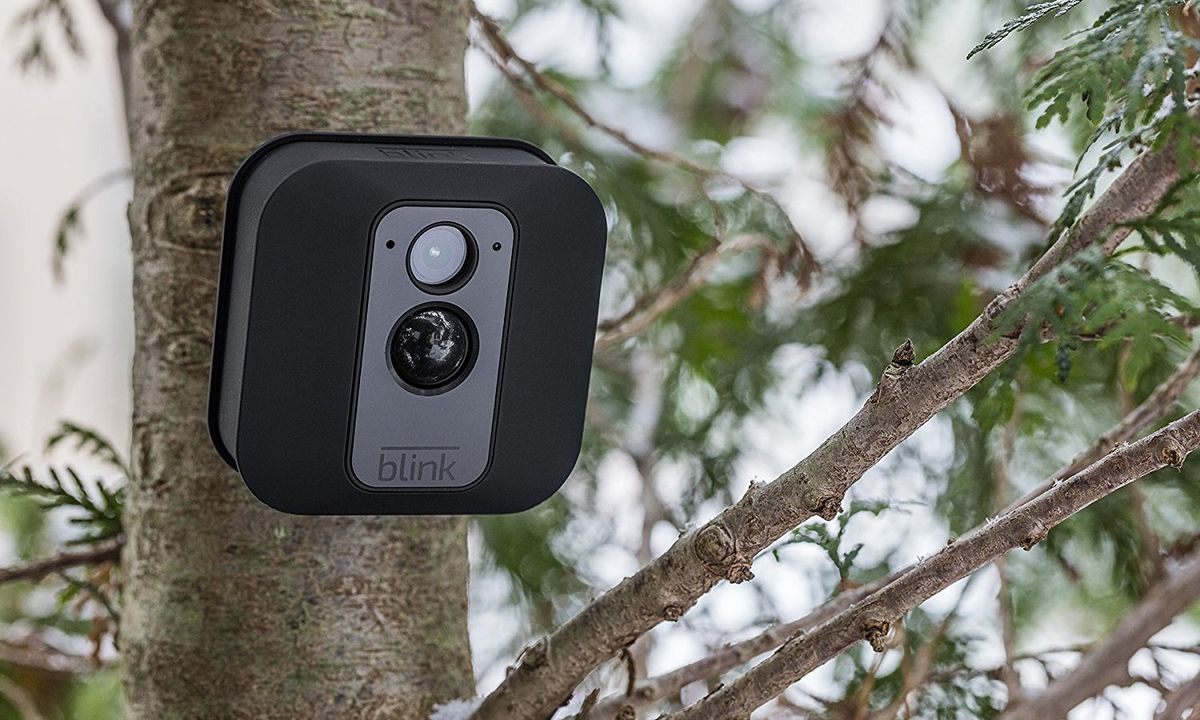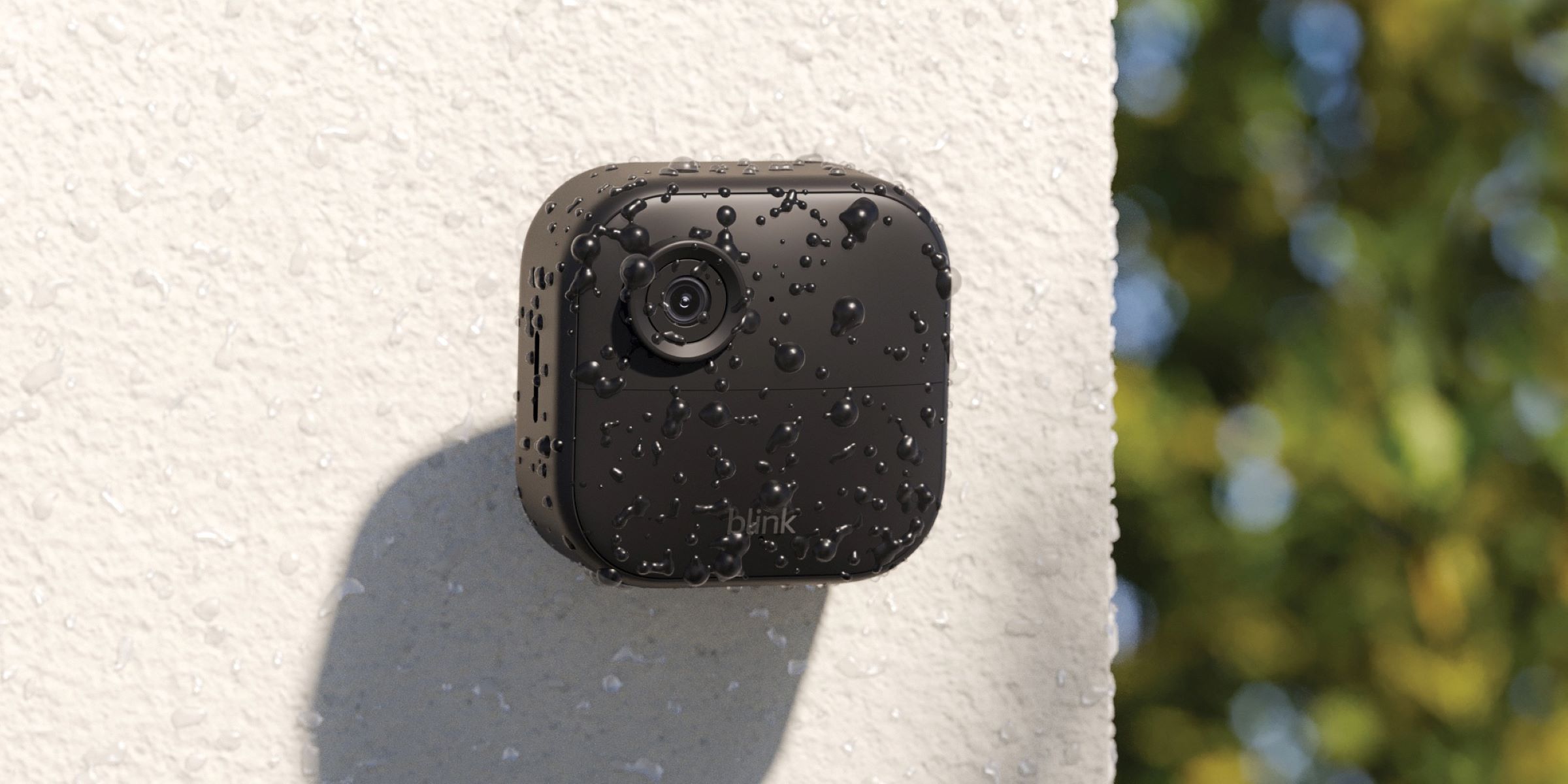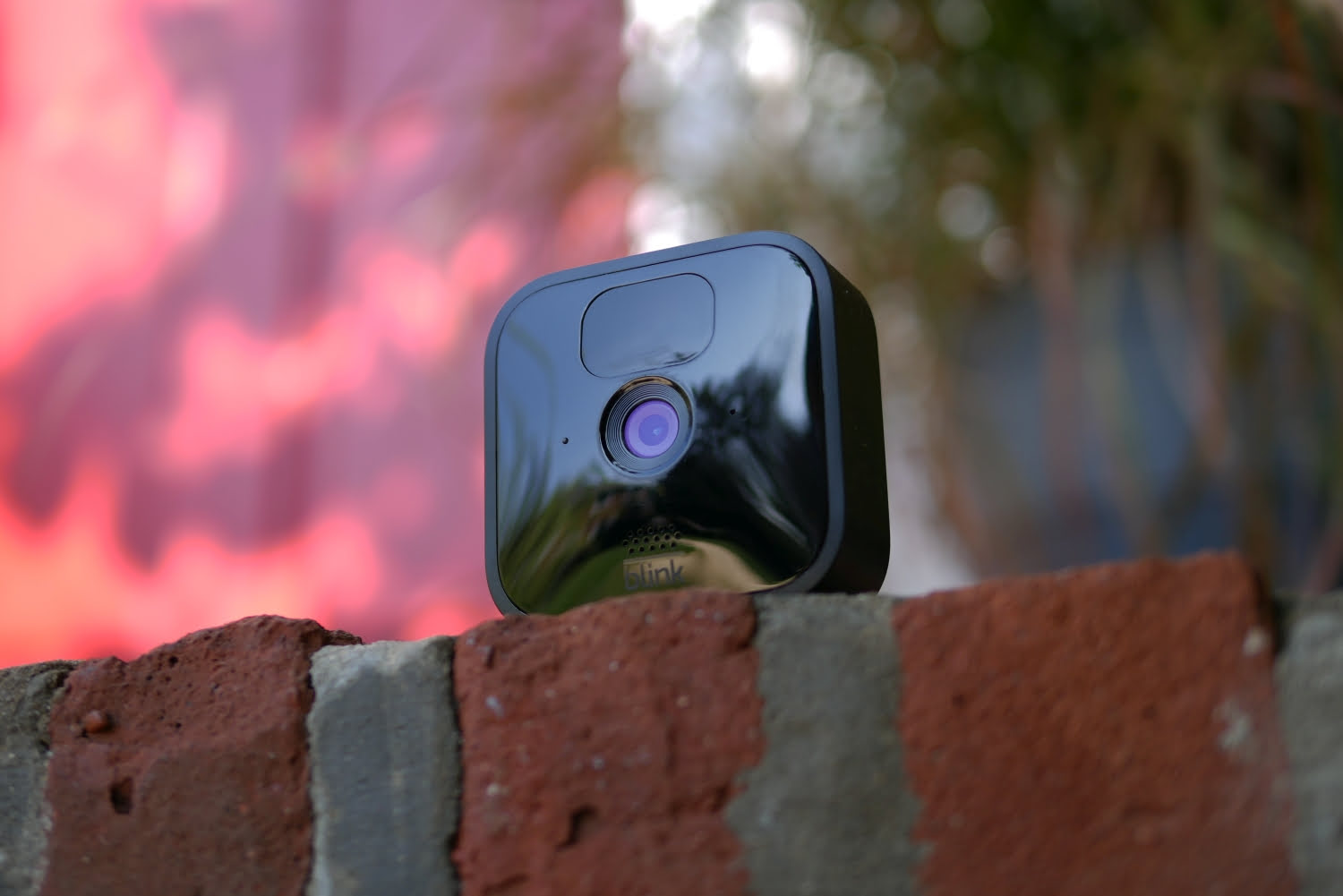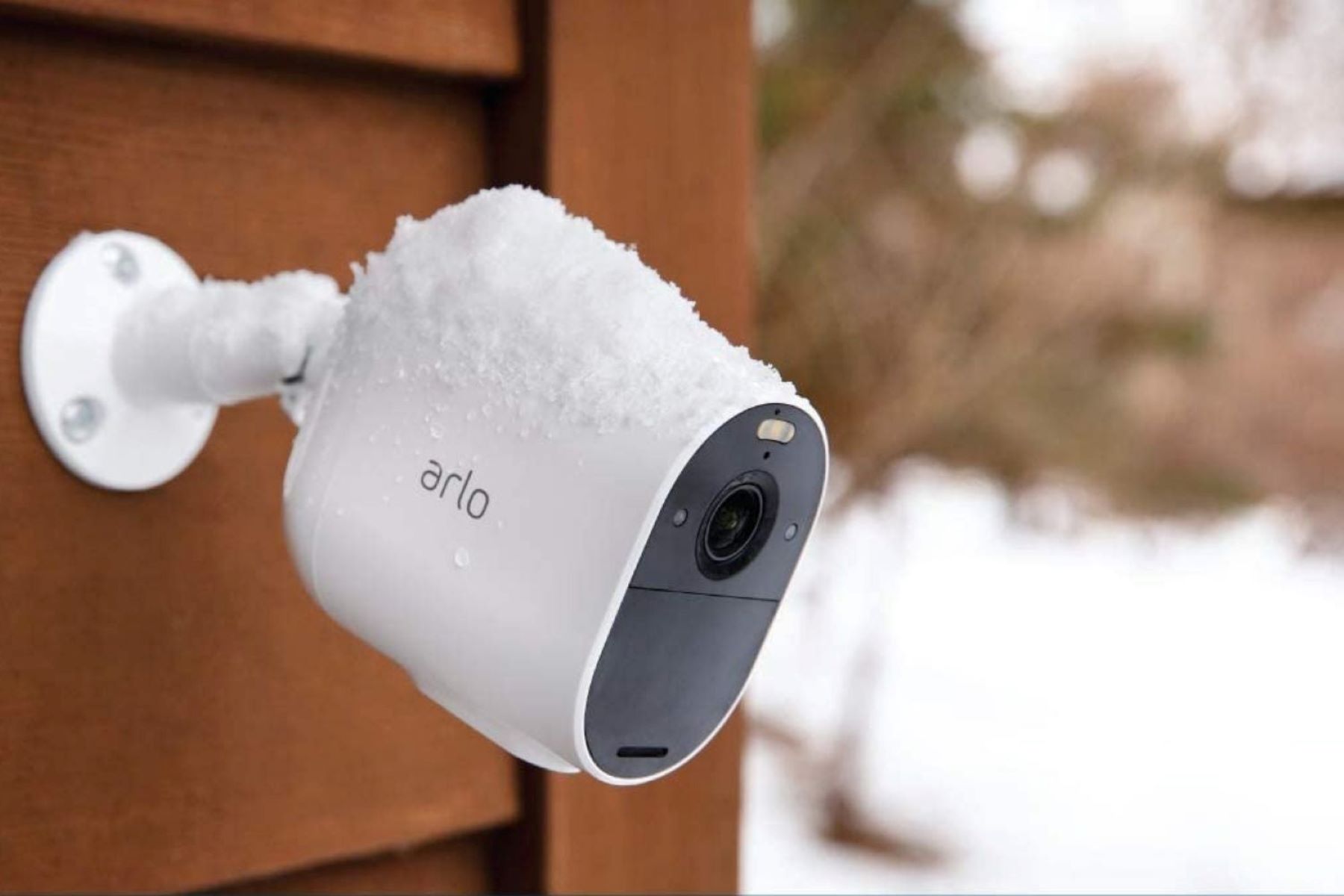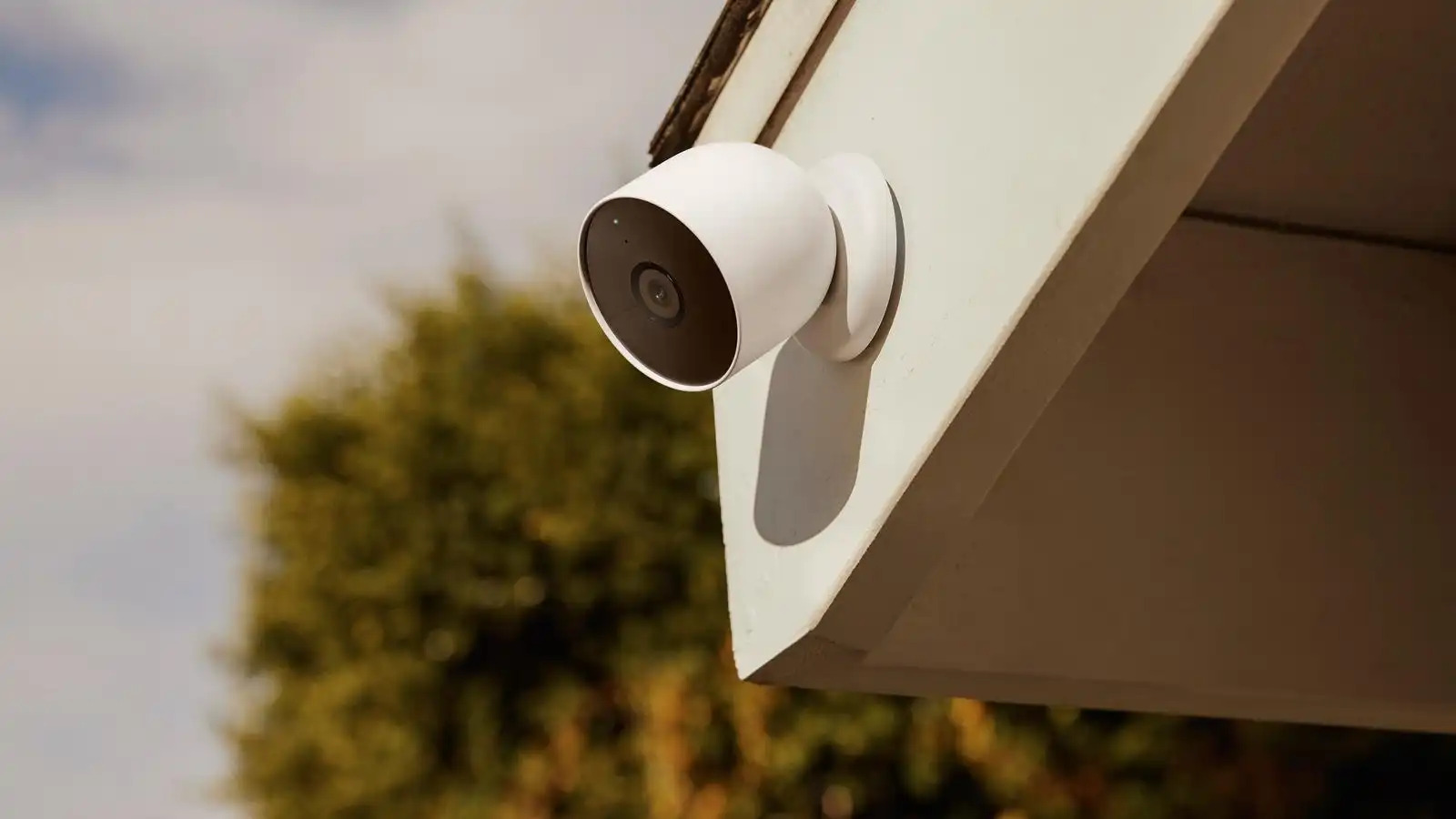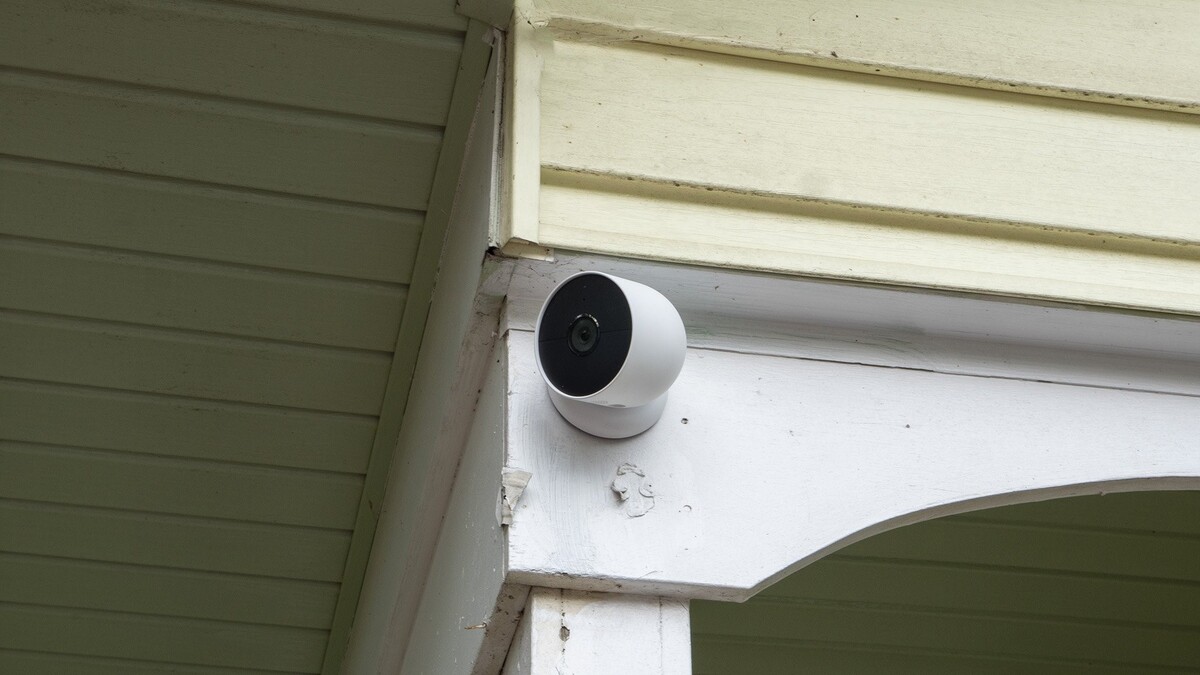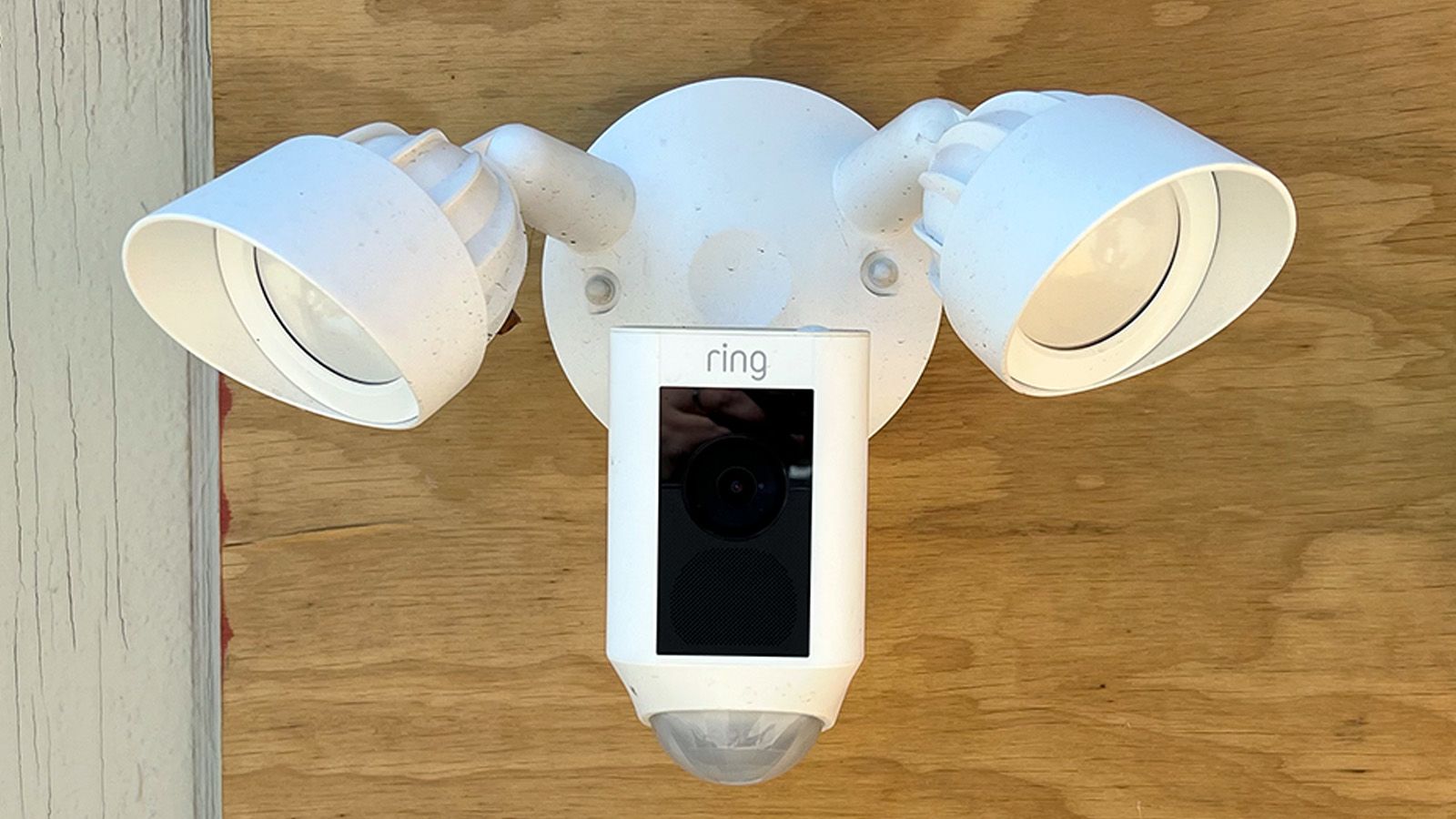Home>Home Security and Surveillance>What Is An IP Outdoor Camera
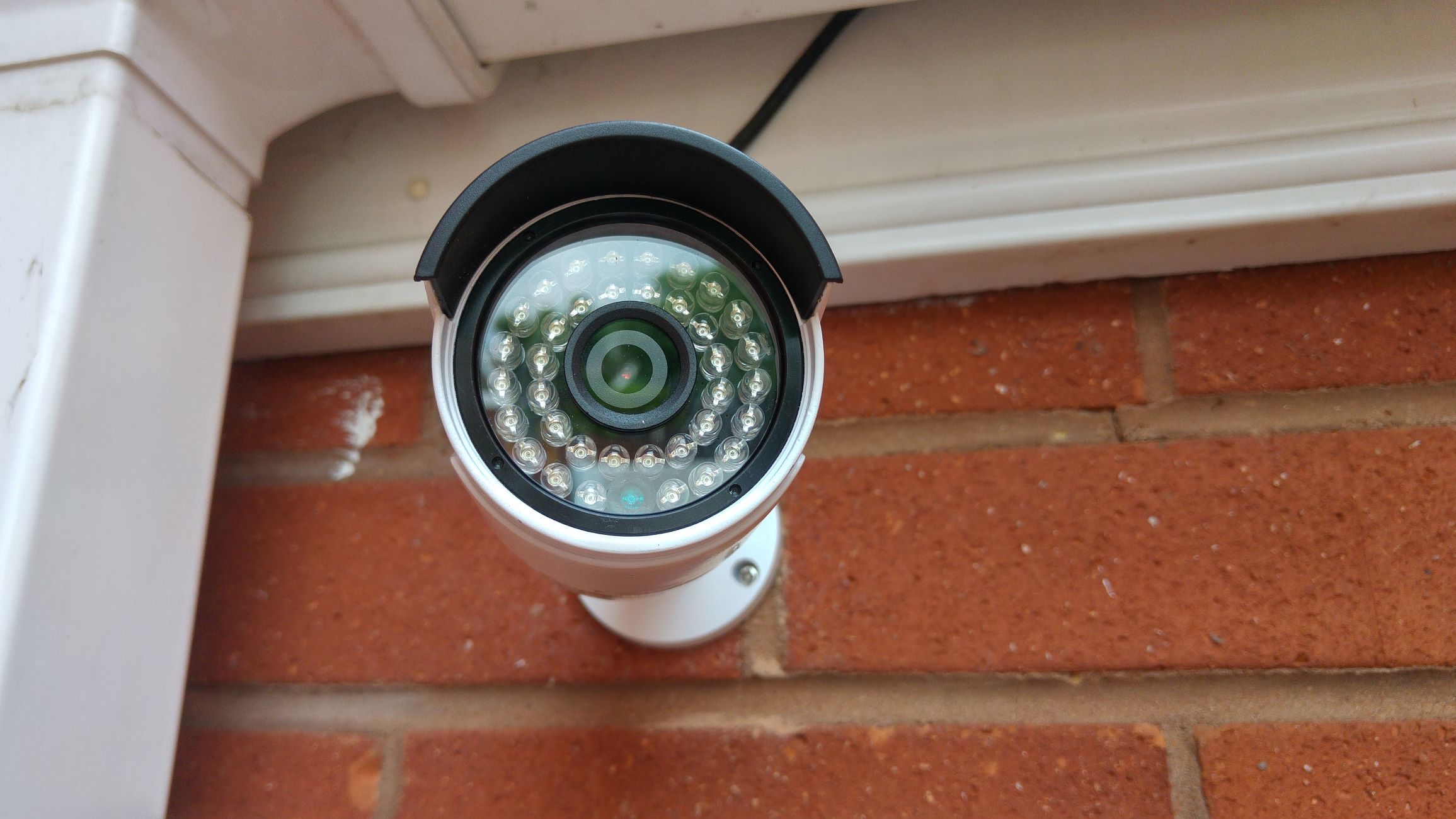

Home Security and Surveillance
What Is An IP Outdoor Camera
Modified: March 6, 2024
Discover the benefits of using an IP outdoor camera for your home security and surveillance needs. Enhance your safety with advanced technology and proactive monitoring.
(Many of the links in this article redirect to a specific reviewed product. Your purchase of these products through affiliate links helps to generate commission for Storables.com, at no extra cost. Learn more)
Introduction
Welcome to the world of home security and surveillance! With the increasing concern for safety and protection, investing in an IP outdoor camera can be a smart choice. Whether you’re looking to enhance the security of your property, monitor your surroundings, or simply keep an eye on your loved ones, an IP outdoor camera provides a reliable and effective solution.
But what exactly is an IP outdoor camera? In this article, we will delve into the definition, key features, installation options, benefits, and factors to consider before purchasing an IP outdoor camera. We will also explore the common applications of these cameras, compare them to traditional security cameras, and discuss their integration with smart home systems.
So, sit back, relax, and let’s dive into the world of IP outdoor cameras!
Key Takeaways:
- IP outdoor cameras are advanced surveillance tools designed for outdoor use. They offer high-resolution imaging, remote access, and integration with smart home systems, providing reliable security and peace of mind for homeowners and businesses.
- When choosing an IP outdoor camera, consider factors like resolution, weather resistance, and integration capabilities. These cameras offer a sophisticated and versatile solution for outdoor security needs, ensuring optimal performance and long-term satisfaction.
Read more: What Are IP Security Cameras
Definition of an IP Outdoor Camera
An IP outdoor camera, also known as an Internet Protocol outdoor camera, is a type of surveillance camera that is designed to be used outdoors to monitor and record activities in the surrounding area. These cameras utilize the Internet Protocol technology to transmit video and audio data over a network, allowing users to access the live feed and recordings remotely from their computers, smartphones, or tablets.
IP outdoor cameras are specifically built to withstand harsh weather conditions and outdoor environments. They are equipped with weatherproof housing, which protects the internal components from rain, dust, and extreme temperatures. Additionally, many IP outdoor cameras feature infrared night vision capabilities, enabling them to capture clear images even in low-light or nighttime conditions.
One of the key features of an IP outdoor camera is its high-resolution imaging capabilities. These cameras can capture detailed images and videos, providing crisp and clear surveillance footage. They also offer various advanced features, such as motion detection, remote pan and tilt functionality, two-way audio communication, and mobile alerts. These features enhance the overall effectiveness and usability of the IP outdoor camera.
Moreover, IP outdoor cameras can be wired or wireless, giving users flexibility in terms of installation options. Wired IP outdoor cameras require a physical connection to a network router or a power source, while wireless IP outdoor cameras rely on Wi-Fi connectivity and can be easily installed without the need for extensive cabling.
It is important to mention that IP outdoor cameras are distinct from traditional analog CCTV cameras. While analog cameras transmit analog signals through coaxial cables, IP cameras convert the captured video and audio data into digital format, which allows for more efficient storage, easier retrieval, and remote accessibility.
Overall, an IP outdoor camera is a modern and sophisticated surveillance solution that offers advanced features, high-quality imaging, and remote access capabilities, making it an excellent choice for monitoring and securing outdoor areas such as homes, offices, warehouses, parking lots, and more.
Key Features of an IP Outdoor Camera
IP outdoor cameras come packed with a variety of features that make them an ideal choice for outdoor surveillance. Let’s explore some of the key features that set these cameras apart:
- High-Resolution Imaging: IP outdoor cameras offer high-definition resolution, typically ranging from 1080p to 4K, allowing for clear and detailed surveillance footage. This ensures that you can easily identify people, objects, and activities.
- Weatherproof Design: These cameras are built to withstand various weather conditions. The weatherproof housing protects them from rain, wind, dust, and extreme temperatures, ensuring their longevity and reliable performance.
- Night Vision: Many IP outdoor cameras are equipped with infrared night vision capabilities. This feature enables the cameras to capture clear footage even in low-light or complete darkness, making them suitable for monitoring during nighttime hours.
- Motion Detection: IP outdoor cameras are often equipped with intelligent motion detection technology. This feature allows the camera to detect movement within its field of view and trigger alerts or recordings, reducing storage space usage and ensuring that you are alerted to any suspicious activity.
- Remote Access: One of the biggest advantages of IP outdoor cameras is their ability to be accessed remotely. With the help of a smartphone, tablet, or computer and a stable internet connection, you can view the live feed, playback recordings, and control camera settings from anywhere in the world.
- Two-Way Audio: Some IP outdoor cameras feature built-in microphones and speakers, allowing for two-way audio communication. This feature enables you to listen to what’s happening in real-time and even speak directly through the camera, making it useful for communication or deterrent purposes.
- Wide-Angle Lens: IP outdoor cameras often come with a wide-angle lens, allowing for a larger field of view. This means that you can monitor a broader area with fewer cameras, providing comprehensive coverage of your property.
- Mobile Alerts: IP outdoor cameras can send instant notifications or mobile alerts to your smartphone or tablet when motion is detected or when specific events occur. This ensures that you are promptly notified of any potential security breaches or suspicious activities.
- Cloud Storage Support: Many IP outdoor cameras offer the option to store surveillance footage in the cloud. This provides an additional layer of security by ensuring that your recordings are safely stored offsite, preventing loss or tampering.
- Integration with Smart Home Systems: IP outdoor cameras can be integrated with smart home systems, allowing for seamless automation and control. You can incorporate the cameras into your existing smart home ecosystem, enabling interactions with other devices and enhancing the overall security of your home.
These key features make IP outdoor cameras versatile, effective, and reliable tools for outdoor surveillance. Whether you need to monitor your home, office, or any other outdoor space, an IP outdoor camera can provide you with the peace of mind and security you’re looking for.
Installation and Mounting Options
When it comes to installing and mounting an IP outdoor camera, you have several options to choose from based on your specific needs and preferences. Let’s explore the most common installation and mounting options for IP outdoor cameras:
- Wall Mount: Wall mounting is the most common and straightforward option. IP outdoor cameras often come with mounting brackets that allow you to securely attach the camera to an exterior wall. This method provides a stable and elevated position, offering a better view of the surrounding area.
- Pole Mount: If you have a large outdoor space or need to monitor a specific area, you can opt for a pole mount installation. This involves attaching the IP outdoor camera to a pole or post using a dedicated mount. Pole mounts are especially useful for monitoring parking lots, entrance gates, or wide outdoor areas.
- Ceiling Mount: In some cases, a ceiling mount may be the preferred option for IP outdoor cameras. This is suitable for covered areas such as porches, balconies, or overhangs. Ceiling mounts can offer a discreet and inconspicuous installation, providing a downward view of the area below.
- Corner Mount: Cameras placed at corners can provide a wider field of view, covering multiple directions. Corner mounts are designed to securely fix the IP outdoor camera at a corner of a building or structure, allowing for optimal coverage and surveillance angles.
- Free-Standing Mount: In certain scenarios where flexibility is required, you may opt for a free-standing mount. This involves using a tripod or stand to place the camera in a desired location. Free-standing mounts are useful when you need to frequently relocate or reposition the camera.
- Hidden Installation: For discreet surveillance, you can choose to hide the IP outdoor camera within objects or structures, such as mailboxes, birdhouses, or garden ornaments. These hidden installations camouflage the camera, making it less noticeable to potential intruders.
When planning the installation of your IP outdoor camera, it is crucial to consider factors such as the camera’s field of view, range, and positioning. Aim to position the camera in a way that covers critical areas and potential entry points while minimizing blind spots. You should also ensure that the camera is within the reach of a stable power source or compatible with a battery or solar-powered options if necessary.
Before proceeding with the installation, it is recommended to refer to the manufacturer’s instructions and guidelines. These guidelines provide specific details on the installation process and can help you achieve optimal performance and functionality from your IP outdoor camera.
Remember, proper installation and mounting ensure that your IP outdoor camera is securely in place, providing you with reliable surveillance coverage and peace of mind.
Benefits of Using an IP Outdoor Camera
Investing in an IP outdoor camera comes with a wide range of benefits that enhance the security and monitoring capabilities of your outdoor spaces. Let’s explore some of the key benefits of using an IP outdoor camera:
- Enhanced Security: The primary benefit of an IP outdoor camera is the enhanced security it provides for your property. These cameras act as a deterrent to potential intruders and can capture crucial evidence in the event of a security breach.
- Remote Monitoring: With an IP outdoor camera, you can monitor your property and surroundings remotely. Whether you’re at work, on vacation, or simply away from home, you can access the live feed and view recordings through a smartphone, tablet, or computer. This provides peace of mind and the ability to respond quickly to any suspicious activity.
- Evidence Collection: In the unfortunate event of a crime or incident, having recorded footage from an IP outdoor camera can be invaluable for investigations and evidence collection. The high-resolution imaging and clear video recordings can assist law enforcement in identifying suspects and providing evidence for legal proceedings.
- Protection Against Vandalism: By installing an IP outdoor camera in visible locations, you deter potential vandals and mischief-makers. The presence of a surveillance camera acts as a strong deterrent, protecting your property from acts of vandalism and reducing the likelihood of damage or destruction.
- Monitoring of High-Traffic Areas: IP outdoor cameras are ideal for monitoring high-traffic areas such as driveways, entrances, and parking lots. With motion detection and mobile alerts, you can be notified whenever someone enters or exits your property, enhancing the overall safety and security of your premises.
- Insurance Benefits: Installing an IP outdoor camera can sometimes result in insurance premium discounts. Some insurance companies offer reduced rates for properties equipped with security cameras, as they are seen as a proactive measure to mitigate risks and protect against potential losses.
- Remote Access Control: Many IP outdoor cameras offer features such as remote pan, tilt, and zoom, allowing you to adjust the camera’s viewing angle without physically being present. This gives you greater control over the surveillance area and the ability to focus on specific areas of interest.
- Integration with Smart Home Systems: IP outdoor cameras can be integrated with smart home systems, allowing them to work in tandem with other smart devices. This integration enables features like automatic recording when doors are opened, or triggering lights and alarms when motion is detected, further enhancing the overall security and automation of your home.
- Real-Time Alerts: IP outdoor cameras equipped with motion detection can send real-time alerts to your mobile device whenever activity is detected. These alerts allow you to respond immediately and take necessary actions, even when you’re not physically present at the location.
- Ease of Installation and Use: IP outdoor cameras are relatively easy to install, especially wireless models that eliminate the need for extensive wiring. Once installed, these cameras are user-friendly and intuitive to operate, making it effortless for anyone to utilize the features and functionalities.
These benefits highlight the value and importance of using an IP outdoor camera for your security and surveillance needs. Whether it’s for home protection, business security, or monitoring outdoor areas, an IP outdoor camera provides you with a powerful tool for deterrence, monitoring, and peace of mind.
When choosing an IP outdoor camera, look for one with a high weatherproof rating (IP66 or higher) to ensure it can withstand outdoor conditions. This will help protect your investment and ensure reliable performance.
Read more: What Is An IP Security Camera
Factors to Consider Before Purchasing an IP Outdoor Camera
When it comes to choosing an IP outdoor camera for your surveillance needs, it’s important to consider several factors to ensure you make the right decision. Here are some key factors to keep in mind before purchasing an IP outdoor camera:
- Resolution: The resolution of the camera determines the overall image quality. Consider cameras with at least 1080p resolution for clear and detailed surveillance footage. If you require higher levels of detail, opt for cameras with 4K resolution.
- Field of View: The field of view indicates how much area the camera can cover. A wider field of view reduces the number of cameras needed for comprehensive coverage. Look for cameras with a wide-angle lens or the ability to pan, tilt, and zoom to capture a larger area.
- Night Vision: If you require surveillance during nighttime or low-light conditions, choose IP outdoor cameras with infrared night vision capabilities. The range and clarity of the night vision should be sufficient for your specific needs.
- Weather Resistance: Since IP outdoor cameras are exposed to the elements, ensure they have a high weatherproof rating (e.g., IP65 or higher) to withstand rain, dust, and extreme temperatures. This ensures the longevity and reliability of the camera in various weather conditions.
- Power Source: Consider how the camera will be powered. Wired cameras require a nearby power source or Power over Ethernet (PoE) connection, while wireless cameras may rely on batteries or solar power. Choose the option that suits your installation requirements and offers reliable power supply.
- Storage Options: Determine how and where the footage will be stored. IP outdoor cameras typically offer local storage on a built-in SD card or allow for cloud storage. Assess your requirements for storage capacity, accessibility, and backup options.
- Video Compression: Look for cameras that support efficient video compression codecs like H.264 or H.265. These codecs reduce bandwidth and storage requirements while maintaining high-quality video playback.
- Remote Access: Check whether the camera supports remote access and if it is compatible with the devices you intend to use (e.g., smartphone, tablet, or computer). Ensure the camera has user-friendly mobile apps or software that allows for easy remote viewing and management.
- Integration Capability: If you have a smart home system or plan to integrate your camera with other security devices, ensure compatibility and check for supported protocols such as ONVIF or integration with popular smart home platforms like Amazon Alexa or Google Assistant.
- Budget: Set a budget for your IP outdoor camera purchase. Consider the features and specifications you require and find a balance between quality and affordability. Remember, investing in a reliable and high-quality camera ensures better performance and longevity.
By considering these factors, you can narrow down your options and choose an IP outdoor camera that best aligns with your surveillance needs and budget. It’s essential to thoroughly research and compare different models and brands to make an informed decision and select a camera that suits your specific requirements.
Common Applications of IP Outdoor Cameras
IP outdoor cameras offer a versatile and powerful solution for a wide range of surveillance needs. Here are some common applications where IP outdoor cameras are widely used:
- Home Security: IP outdoor cameras are extensively used for home security purposes. They provide homeowners with the ability to monitor their property, deter potential intruders, and capture evidence in the event of a security breach.
- Business Surveillance: Many businesses rely on IP outdoor cameras to secure their premises, monitor employee activities, and prevent theft or vandalism. These cameras offer round-the-clock surveillance and can serve as a valuable tool for loss prevention and maintaining a secure work environment.
- Perimeter Monitoring: IP outdoor cameras excel at monitoring the perimeter of residential communities, commercial properties, and industrial sites. They can help detect and deter unauthorized access, trespassing, and protect valuable assets.
- Public Safety: Government bodies and public safety organizations utilize IP outdoor cameras to ensure the safety of public spaces such as parks, city centers, transportation hubs, and parking lots. These cameras can help monitor crowd movement, detect suspicious activities, and aid in crime prevention.
- Construction Sites: Construction sites are vulnerable to theft, unauthorized activities, and safety hazards. IP outdoor cameras provide continuous monitoring and can help ensure the security of valuable equipment and the safety of workers.
- Parking Lots and Garages: IP outdoor cameras are commonly used in parking lots and garages to monitor activities, prevent theft or vandalism, and enhance the overall security of vehicles and pedestrians.
- Remote Monitoring: IP outdoor cameras are ideal for properties that require remote monitoring, such as vacation homes, second residences, or properties in rural areas. Owners can remotely access the cameras to monitor their property or receive alerts if any suspicious activity occurs.
- Schools and Educational Institutions: IP outdoor cameras play a vital role in securing schools and educational facilities. They can help monitor entrances, common areas, and parking lots, ensuring the safety of students, staff, and visitors.
- Animal Monitoring: Wildlife enthusiasts and researchers use IP outdoor cameras to monitor and study animal behaviors in their natural habitats. These cameras can capture rare and fascinating wildlife moments without disturbing the animals.
- Agricultural Surveillance: IP outdoor cameras can be employed in agricultural settings to monitor livestock, detect intrusions, and protect crops from theft or damage.
These are just a few examples of the diverse applications of IP outdoor cameras. Whether it’s for residential security, commercial surveillance, public safety, or specialized monitoring needs, IP outdoor cameras provide an effective and versatile solution for various industries and environments.
Comparison between IP Outdoor Cameras and Traditional Security Cameras
When it comes to choosing a surveillance solution, it’s important to understand the differences between IP outdoor cameras and traditional security cameras. Here’s a comparison of the two:
Image Quality: IP outdoor cameras offer higher resolution and image quality compared to traditional security cameras. IP cameras typically provide high-definition video, ranging from 1080p to 4K resolution, resulting in clearer and more detailed footage.
Installation: Traditional security cameras often require complex wiring and cabling for connectivity. On the other hand, IP outdoor cameras can be wired or wireless, providing more flexibility and ease of installation. Wireless IP cameras eliminate the need for extensive wiring, making it simpler to install and relocate the cameras as needed.
Remote Access: IP outdoor cameras offer remote access capabilities, allowing users to view the live feed and recordings from anywhere using a smartphone, tablet, or computer. Traditional security cameras usually lack this feature, restricting access to the surveillance footage to the physical location where the recording device is installed.
Scalability: IP outdoor cameras can be easily integrated into existing network infrastructures and expanded as needed. Traditional security cameras, especially analog systems, may have limitations when it comes to scalability and adding additional cameras to the system.
Video Storage: IP outdoor cameras typically support digital video recording (DVR) or network video recording (NVR), allowing for efficient storage and retrieval of surveillance footage. Traditional security cameras often use analog tapes or DVRs with limited storage capacity and lower video compression capabilities.
Advanced Features: IP outdoor cameras often come with advanced features such as motion detection, mobile alerts, two-way audio, facial recognition, and intelligent analytics. Traditional security cameras may lack these advanced functionalities, limiting their capabilities for video analysis and event detection.
Compatibility: IP outdoor cameras are designed to work seamlessly with modern technologies and network protocols, making them compatible with a wide range of devices and software applications. Traditional security cameras may have limited compatibility and interoperability with modern systems and technologies.
Cost: Traditional security cameras are generally more affordable upfront, especially analog systems. However, as technology advances and IP outdoor cameras become more prevalent, the cost difference has reduced. Additionally, the long-term benefits and advanced capabilities of IP cameras may outweigh the initial cost disparity.
While traditional security cameras have their place in certain scenarios, IP outdoor cameras offer superior image quality, advanced features, scalability, and remote access capabilities. They provide a more future-proof and versatile solution for modern surveillance needs.
Integration with Smart Home Systems
Integration of IP outdoor cameras with smart home systems has become increasingly popular, as it offers homeowners a seamless and centralized approach to home security and automation. Let’s explore the benefits and possibilities of integrating IP outdoor cameras with smart home systems:
Centralized Control: By integrating IP outdoor cameras with a smart home system, homeowners can manage and control all their security devices from a central hub or mobile app. This allows for convenient access and control of the cameras along with other smart devices in the home, such as door locks, lights, and alarms.
Enhanced Security: Integration with smart home systems enables advanced security features. For example, when an IP outdoor camera detects motion or an intrusion, it can trigger other devices to turn on lights, sound alarms, or unlock doors to deter potential intruders. This synchronized response enhances the overall security of the property.
Automation and Customization: With integration, homeowners can create customized security scenarios and automation rules based on their preferences. For instance, the IP outdoor camera detecting movement at the front door can trigger the porch lights to turn on, or capturing a suspicious activity can prompt a notification on the homeowner’s smartphone.
Seamless Monitoring: Integration allows homeowners to conveniently monitor their IP outdoor cameras alongside other smart devices in a single interface. This provides a comprehensive view of the home’s security status, allowing for easy monitoring and control from anywhere, even while away from home.
Notifications and Alerts: When integrated with a smart home system, IP outdoor cameras can send real-time notifications and alerts directly to homeowners’ smartphones. Whether it’s detecting motion, identifying a person at the front door, or tampering with the camera, timely notifications help homeowners stay informed and take appropriate actions when necessary.
Scheduled Automation: Integrating IP outdoor cameras with smart home systems allows for scheduled automation. Homeowners can set specific time-based rules, such as arming the cameras during nighttime hours automatically or scheduling regular camera patrols to monitor certain areas of the property at designated times.
Voice Control: Integration with voice-activated assistants like Amazon Alexa or Google Assistant enables homeowners to control and access their IP outdoor cameras hands-free. Simply by using voice commands, homeowners can view camera feeds on smart displays or check the status of the security system.
Event Logging and History: Integration offers the benefit of event logging and history. Homeowners can review past events, playback recorded footage, and track the history of actions and triggers associated with the IP outdoor cameras, providing a valuable log of security-related activities.
Ecosystem Expansion: Integrating IP outdoor cameras with a smart home system opens doors for ecosystem expansion. Homeowners can add more cameras, sensors, and smart devices to establish a comprehensive home security network that suits their evolving needs, all controlled through a single platform.
Overall, integration of IP outdoor cameras with smart home systems provides homeowners with a truly connected home security experience. It offers enhanced security, convenience, and customization, empowering homeowners to have full control over their IP outdoor cameras and other smart devices to create a secure and efficient living environment.
Conclusion
IP outdoor cameras have revolutionized the world of home security and surveillance with their advanced technology and powerful features. These cameras offer high-resolution imaging, remote access capabilities, and a wide range of applications, making them an essential tool for protecting properties and monitoring outdoor areas.
Throughout this article, we have explored the definition of IP outdoor cameras, their key features, installation options, benefits, factors to consider before purchasing, common applications, and their integration with smart home systems. It’s clear that IP outdoor cameras provide a comprehensive and reliable solution for enhancing security and surveillance.
With their ability to capture high-quality video footage, withstand harsh weather conditions, and offer remote access, IP outdoor cameras provide homeowners and businesses with peace of mind and efficient monitoring capabilities. Whether it’s securing a residential property, monitoring a business premise, or ensuring public safety, IP outdoor cameras excel in delivering reliable and effective surveillance.
Integrating IP outdoor cameras with smart home systems takes surveillance to the next level by offering centralized control, enhanced security, and automation possibilities. Homeowners can conveniently monitor and manage their cameras alongside other smart devices, creating a comprehensive security ecosystem customized to their needs.
When choosing an IP outdoor camera, it’s crucial to consider factors such as resolution, field of view, weather resistance, power source options, storage, and integration capabilities. By carefully evaluating these factors and selecting an IP outdoor camera that suits your specific requirements, you can ensure optimal performance and long-term satisfaction.
Overall, IP outdoor cameras provide a reliable and sophisticated solution for all your outdoor security and surveillance needs. With their advanced features, high-resolution imaging, and integration capabilities, these cameras offer peace of mind, enhanced safety, and a greater sense of control over your personal and professional spaces.
So, whether you’re protecting your home, securing your business, or monitoring public areas, consider the power and versatility of IP outdoor cameras. Embrace this technology and experience a new level of security and surveillance in your outdoor spaces.
Frequently Asked Questions about What Is An IP Outdoor Camera
Was this page helpful?
At Storables.com, we guarantee accurate and reliable information. Our content, validated by Expert Board Contributors, is crafted following stringent Editorial Policies. We're committed to providing you with well-researched, expert-backed insights for all your informational needs.
